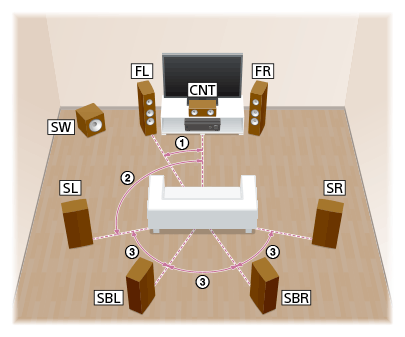
Sound plays a huge role in Counter-Strike: Global Offensive. You can get key intel just by standing in the right place and pricking up your ear. But here’s a big question: is there a difference between listening to footsteps through ordinary earbuds and through a top-notch gamer headset? That’s exactly the topic of today’s post from CS.MONEY Blog.
What can gaming headphones do?
To answer this, let’s take a look at some product descriptions from manufacturers. For instance, the HyperX Cloud II is the most popular headphone model among Counter-Strike: Global Offensive pros. The company describes the model as ultra comfortable headphones with amazing sound.
If you look at some other trendy headphones — say, the Logitech PRO X or the Razer BlackShark V2 Pro — the picture is pretty much the same. All of these manufacturers promise impeccable sound combined with comfort in use: memory foam ear pads, passive noise cancellation, and other tricks. Now we only need to figure out whether and how this fancy stuff can raise the K/D or the percentage of wins in-game.
Sound quality
Gaming headsets truly provide a fantastic level of sound quality for video games. We won’t speculate on the subject of audiophilia and music fidelity in gaming headsets. The important thing is that such headphones are just the ticket for video games in general.
Do they give you an advantage over players with regular headphones, though? Hardly. Even the most top-of-the-line headphones won’t let you hear ‘even more’ in Counter-Strike: Global Offensive. It’s simply not possible. Sound-wise, gaming headsets simply do their job well — no magic.
HRTF vs. 7.1
It doesn’t come as a surprise that player headsets often come with additional gimmicks besides sound quality. Like virtual 7.1 surround sound. To understand what 7.1 is about and why you (don’t) need it to play, as well as figure out how to treat it best, we’ll have to delve into the subject a bit.
The human ear is designed in such a way that its complex shape allows the brain to determine where the sound is coming from in three dimensions. This is called binaural perception. Music artists use it a lot in their tracks. For example, in Bohemian Rhapsody by Queen, you can easily hear how the voices ‘travel’ from left to right and vice versa.
7.1 systems are meant to achieve ‘three-dimensional’ sound. The name comes from the number of speakers: there are 7 regular speakers plus 1 subwoofer. With that many speakers, the listener, who’s in the center, can be surrounded with deep three-dimensional sound. But you can’t put an entire room of speakers into your headphones, right?

Right. That’s why headphones don’t provide you with real 7.1 sound, delivering virtual sound instead. The headphone software modifies the tracks in the sound channels to ‘trick’ the brain and turn the sound on the left into sound on the left, slightly behind and above. While this technology is a technical marvel, there’s a problem about such headphones as Counter-Strike: Global Offensive goes.
Valve’s game boasts the so-called head-related transfer function, HRTF for short. It does essentially the same thing, modifying the sound so that it can be easily tracked in space. Obviously, there are two similar features, virtual 7.1 surround sound in headphones and HRTF, that are at odds with each other. You can’t use both at the same time.
So which of the two is better? The devs at Valve have done a great job: the HRTF in Counter-Strike: Global Offensive works flawlessly. It’s just as good as the 7.1 sound in gaming headsets. Furthermore, it’s even advisable to opt for this feature in CS:GO rather than for 7.1 headphone sound.
Does a gaming headset with 7.1 surround sound give an advantage over a player with regular headphones and the HRTF enabled? No: the functions are similar and both handle sound at the software level, not the hardware level. That said, there’s no way gaming headsets can be considered hardware doping in this regard.
Comfort
We’ve established that a gaming headset doesn’t offer any advantage in terms of sound. The quality is certainly excellent, but none of the headset features render the sound fundamentally better — or more informative. Fortunately, these headphones have another trump card up their sleeve: comfort.
It’s truly difficult to overestimate the significance of well-fitting headphones for long gaming sessions. You certainly can’t bring your A-game when the ear pads are slippery from sweat and pressurize your ears into the bargain. Under such circumstances, comfortable play is out of the question. So all these ‘memory effects’ and ‘proper weight distribution’ frills aren’t just a marketing ploy, but a real advantage for avid players.
While it’s unlikely to bring an advantage in any particular game, the ability to play more consecutive matches without discomfort is cool and is a good reason to buy a gaming headset.
Are headphones hardware doping?
No. Gaming headsets are definitely good in their field. They produce decent sound, the built-in microphone is great for communicating while playing, and the ergonomics allow you to play a dozen games in a row without feeling uncomfortable. Nevertheless, none of this gives you an advantage in a gaming situation over regular quality headphones. A gaming headset is a high-quality accessory — and nothing beyond.
And that’s a good thing. Just imagine that you could get more info from the sound in Counter-Strike: Global Offensive when playing with headphones of a particular company and model? That would be a regular nightmare! The definition pay-to-win that should never be part of a competitive game.
Did you like this post? Then be sure to read our investigation about mouse hardware doping and subscribe to the CS.MONEY Blog newsletter. Thanks to the latter, you’ll get all the hot stuff from us and will always stay up to date on all things CS:GO. No need to wait, subscribe right now — leave your email, and you’re all set.












